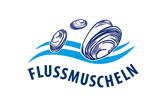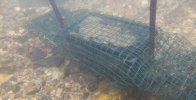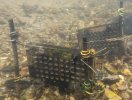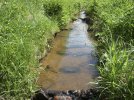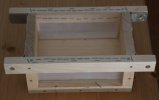Mussel breeding
Bioindication
With a bioindication, the reactions of the living beings examined provide information about the condition of their habitat or their exposure to certain substances. Depending on what is being investigated, bioindication experiments can be carried out either in controlled laboratory conditions or under field conditions. Bioindication with juvenile mussels is a key tool for checking the suitability of a certain river stretch for mussels, the success of restoration measures or for investigating the ecological requirements and behaviour of juvenile mussels. The classic endpoints are the survival and growth rates of the juvenile mussels used.
Field experiments
Bioindication in the field is primarily used to identify suitable areas for the rearing and release of freshwater pearl mussels. Juvenile mussels of a defined size are therefore exposed in the river stretches that must be tested. Their growth and survival in relation to the prevailing environmental parameters is investigated.
There are two crucial periods of the year for outdoor exposure, the summer months and the winter. The summer months are decisive for growth and allow conclusions to be drawn about the food supply in the water. The winter months show whether a section of water is suitable for the mussels all year round and whether animals can stock up enough reserves during the growth period to survive the colder months.
In the MARA Project, the bioindication also contributes to the further development of rearing methods. Different systems can be compared to each other and optimised further. Currently, Buddensiek plates and gravel cages are compared with regards to their suitability as rearing containers for juvenile mussels in their early life stages. Growth and survival rates are taken into account, as is the manageability and amount of time required for maintenance.
